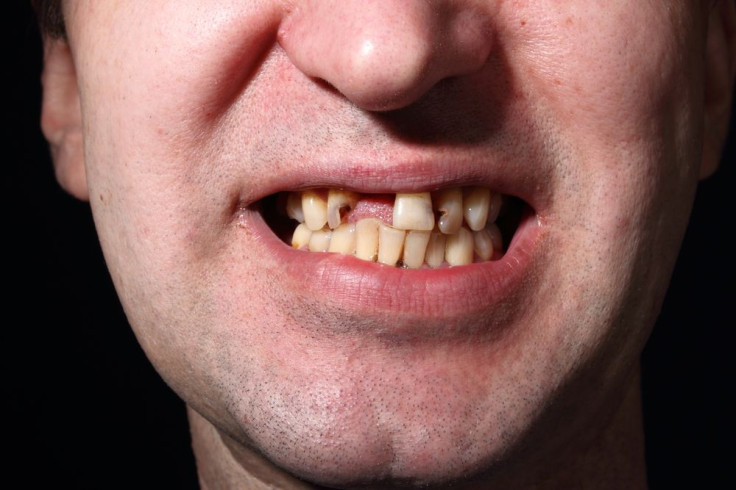Oral Hygiene Disparities Among Rich And Poor Also Span Race, Age, And Education Level

Disparities in oral health are common around the world and tend to be chalked up to more access to dental hygienists among people with higher income. A recent study conducted at Newcastle University has revealed that while age and income do play a role in the number of teeth a person has, there is more to the role socioeconomic factors play in oral health than just access to a dental hygienist.
“It’s probably not a big surprise that poorer people have worse dental health than the richest, but the surprise is just how big the differences can be and how it affects people,” lead researcher Professor Jimmy Steele said in a statement. “Eight teeth less, on average, is a huge amount and will have had a big impact for these people. From our data, it is hard to say which specific factors are driving each of the differences we are seeing here, but there is probably a real mix of reasons, and it is not just about, for example, the availability of treatment.”
Steel and his colleagues recruited over 6,000 people age 21 and older from every socioeconomic background in the UK. Oral health was measured under seven conditions, including decayed teeth, filled teeth, missing teeth, and number of teeth. Researchers are surprised by the lack of attention brought to inequalities in oral health, considering the impact it can have on everyday well-being and quality of life. They hope that their research will serve as a wakeup call for public health organizations.
Study participants with lower income, occupational class, education attainment, and higher deprivation, on average, suffered from tooth decay, gum disease, tooth gaps, and had less teeth compared to their richer and more educated counterparts. Among those 65 and older, older adults with lower income average eight fewer teeth, or a quarter of a full set, compared to older adults with a higher income. Sugary diets and being educated on oral health were two of the major underlying causes leading to fewer teeth, tooth decay, and gum disease.
“Although the younger generation have much better oral health than their parents ever did, the differences between rich and poor are very considerable and young people are particularly aware when they do not have a healthy mouth,” Steele added. “The risk is that as health gets better overall the differences just get greater and poorer people lose out.”
According to the Centers for Disease Control and Prevention, oral health disparities are highly prevalent in the United States. For example, non-Hispanic blacks, Hispanics, American Indians, and Alaska Natives tend to suffer from the poorest oral health of any racial or ethnic background in the U.S. In addition to access to health services and the ability to get and keep dental insurance, social factors contributing to poor dental health include tobacco use, frequent alcohol use, and poor dietary choices.
Source: Tsakos G, Wildman J, Steele J, et al. The Interplay between Socioeconomic Inequalities and Clinical Oral Health. Journal of Dental Research. 2014.



























